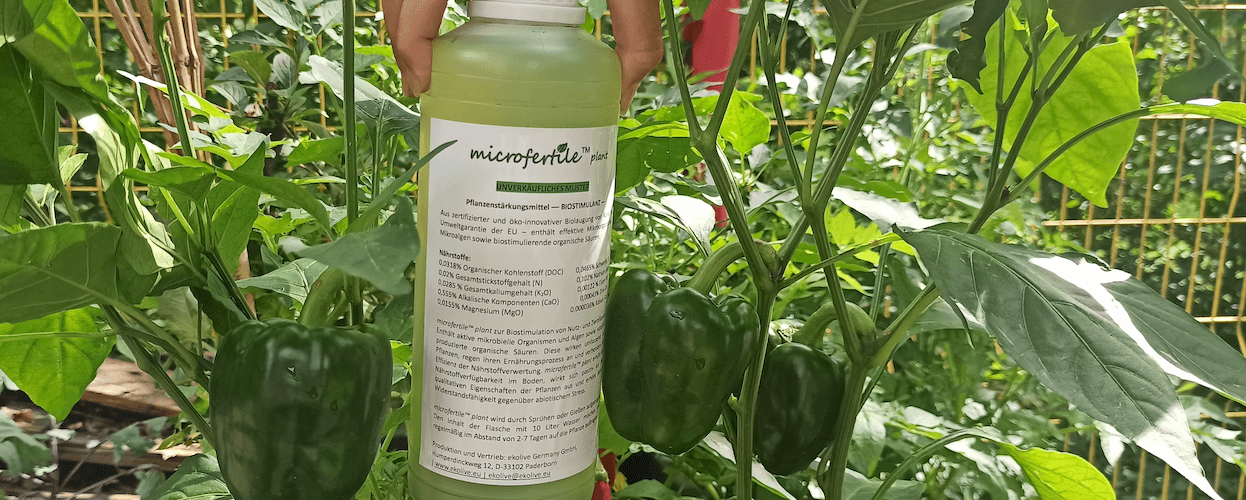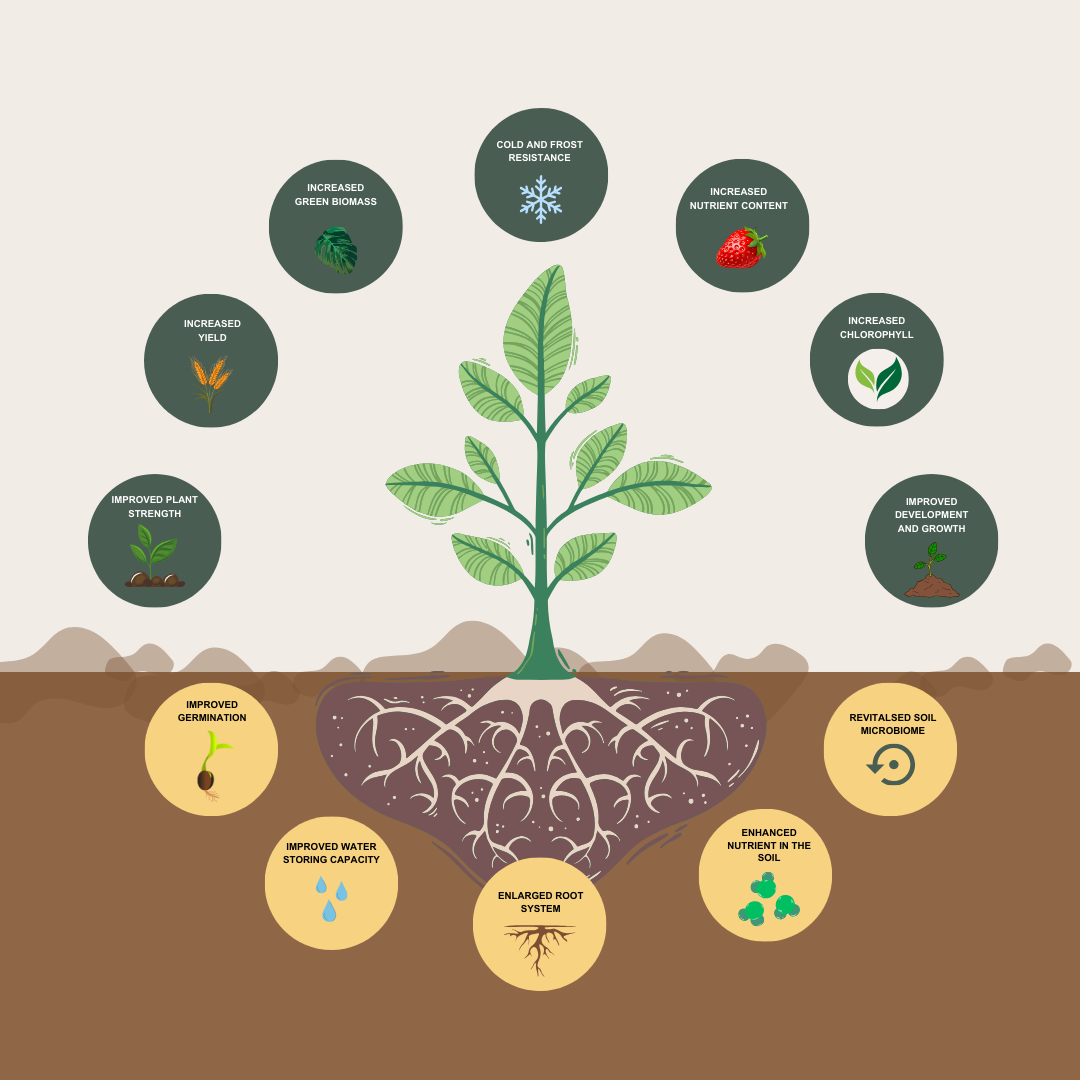
microfertile® plant
microfertile® plant is an organic liquid bio|me|stimulant containing dissolved silicified rock rich in all microelements, Chlorella microalgae, and other types of plant growth-promoting bacteria such as Thiobacillus and their valuable metabolites (oxaloacetic acid, pyruvic acid, and antifreeze proteins) with a pH value of 7-8. It is particularly suitable for the formation of green matter and increases resistance to cold and frost.
Special Effects

Applications
For the best results, here you can find all application recommendations for each plant and crop type.
Foliar application
To increase strength, green biomass, yield and improve photosynthesis: spray a 5% concentration (5 litres of microfertile® plant per 100 litres of water) over the entire plant surface.
Foliar Application:
Spray a concentration of 5% (5 litres of microfertile® plant per 100 litres of water) 2 to 3 times during the tillering phase and the stem elongation phase.
microfertile® plant can be used together with herbicides, fungicides, insecticides, liquid fertilisers or ekofertile® plant.
Foliar Application:
To increase cold and frost resistance (down to minus 6°C) and to improve photosynthesis, apply a 5% concentration (5 litres of microfertile® plant per 100 litres of chlorine-free water) by spraying over the entire area on leaves at least 24 hours before the expected frost (the effect lasts up to 10 days; note that wind increases the plants´ perceived cold). Antifrost proteins are then converted into oils, vitamins and proteins, increasing the quality and yield of the vegetable.
Foliar Application:
To increase cold and frost resistance (down to minus 6°C) and to improve photosynthesis: spray a 5-10% concentration (5 to 10 litres of microfertile® plant per 100 litres of chlorine-free water) at least 24 hours before the expected frost over the entire surface on leaves anytime during the growth stage or in early spring (the effect lasts up to 10 days; note that wind increases the plants´ perceived cold). Antifrost proteins are then converted into oils, vitamins and proteins, increasing the quality and yield of the fruits.
Irrigation:
5% concentration of ekofertile®plant and 5% microfertile®plant (5 l of each product per 100 l of water) applied 3-4 times at regular intervals during the growth phase.
Foliar Application:
Spraying with 5% concentration of ekofertile®plant and 5% concentration of microfertile®plant (5 liters of each product per 100 liters of water) applied 3-4 times at regular intervals during vegetative growth.
Foliar Application
To protect against frost (down to minus 6°C) and to improve photosynthesis, apply a 10% concentration (10 litres of microfertile® plant per 100 litres of chlorine-free water) by spraying over the entire area on leaves, flowers and buds at least 24 hours before the expected frost (the effect lasts up to 10 days; note that wind increases the plants´ perceived cold). Antifrost proteins are then converted into oils, vitamins and proteins, increasing the quality and yield of the fruits.
Irrigation
5% concentration of ekofertile®plant and 5% concentration of microfertile®plant (i.e. 5 liters of each product per 100 liters of water) applied 3-4 times at regular intervals. Against frost.
10% microfertile® plant approx. 24 hours before frost.
Foliar Application:
10% concentration of ekofertile®plant and 5% concentration of microfertile® plant (means 10 and 5 liters of each product per 100 liters of water) at regular intervals of approximately 2 weeks.
Foliar Application
To protect against frost (down to minus 6°C) and to improve photosynthesis, apply a 10% concentration (10 litres of microfertile® plant per 100 litres of chlorine-free water) by spraying over the entire surface on leaves, flowers and buds at least 24 hours before the expected frost (the effect lasts up to 10 days; note that wind increases the plants´ perceived cold). Antifrost proteins are then converted into oils, vitamins and proteins, increasing the quality and yield of the vine.


